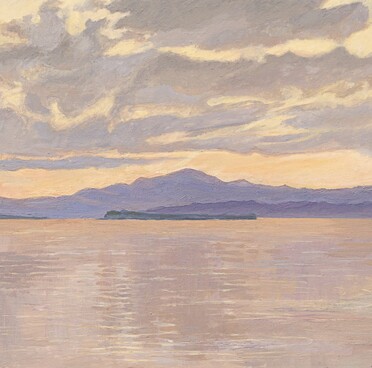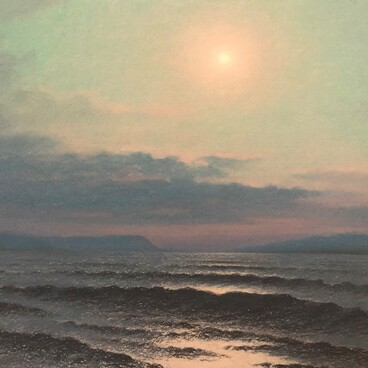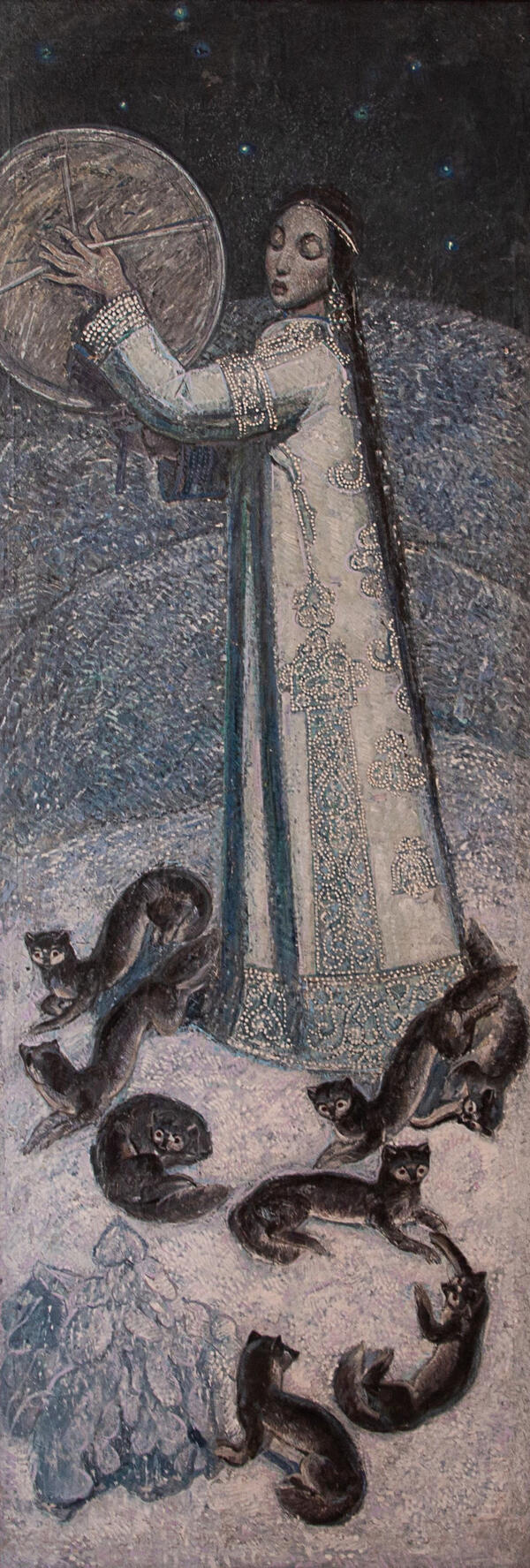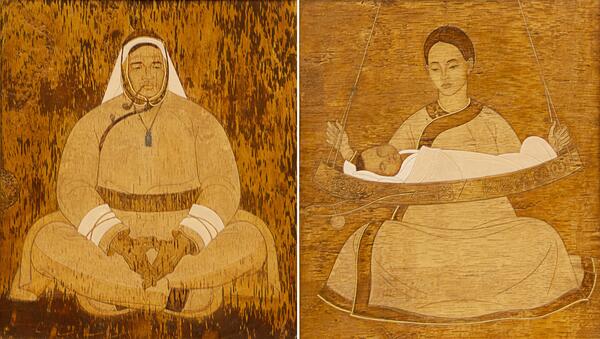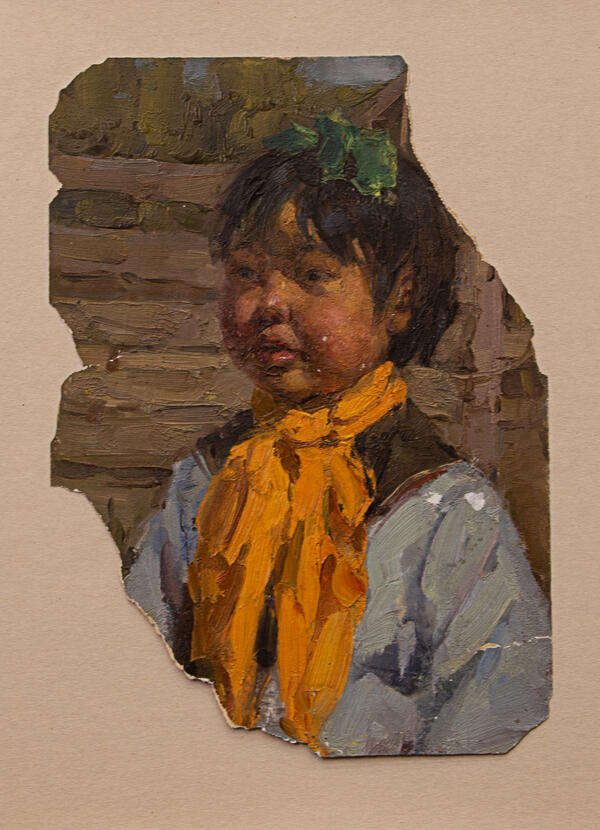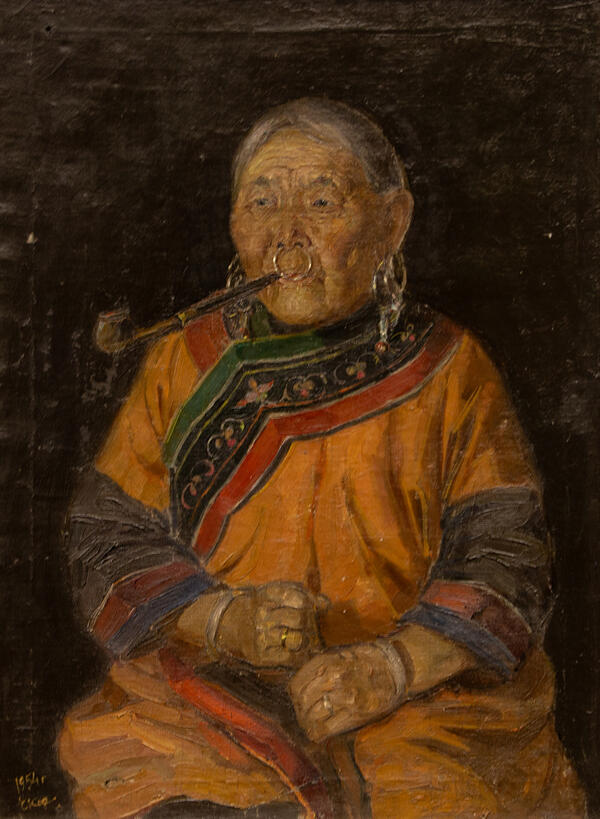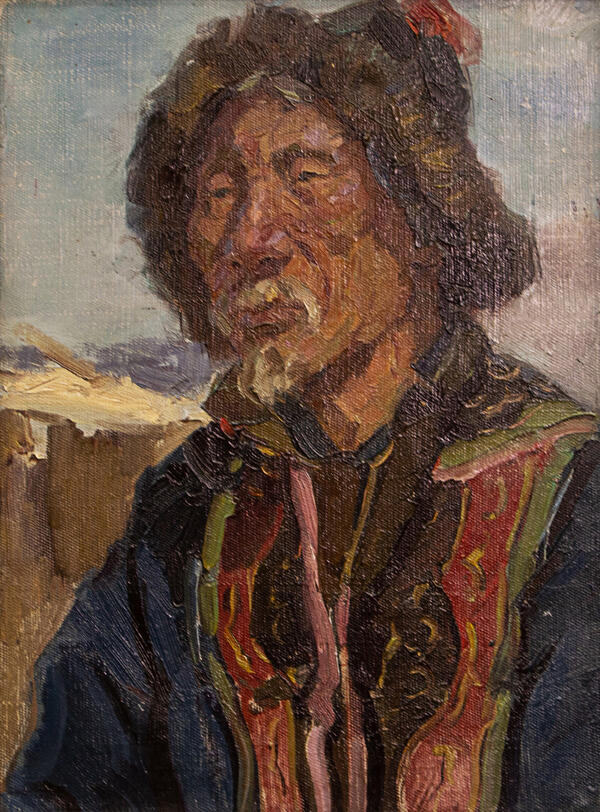A painter and Honored Artist of the RSFSR Yevgeny Vasilyevich Korolenko (1929–2000) was born in the Volga region. He came from a dynasty of icon painters and priests; his personality and worldview were greatly influenced by the rural environment, the closeness of the church, and the traditions of Orthodox art.
He began to draw at the age of three, and though he received no special education, the artist still managed to grasp the essentials and secrets of art by studying the best works. He was also taught by nature itself: his works are based on drawings made from nature.
At the end of the 1950s, Yevgeny Korolenko came to the Russian Far East to never leave it again. He got acquainted with the outstanding artists — Georgy Alexandrovich Tsivilyov, Nikolay Pavlovich Dolbilkin, and Grigory Stepanovich Zorin — and learned a lot from their manner of painting. In 1958, he joined the Artists’ Union.
Yevgeny Korolenko resided and worked for a long time in the ethnic villages of Ust-Orochi and Kondon, enjoying the local color and learning more about the lifestyle, traditions, and art of the natives. He also recorded local tales and legends. He made a great number of studies during his trips, and they gradually formed a comprehensive picture of the world of the indigenous peoples in the Amur Region.
Korolenko divided his works into four big periods — Nanai, symbolic, tribal and Slavic; the latter remained unfinished.
Yevgeny Korolenko’s manner of painting is very diverse: his works combine glazing and small impasto strokes, a smooth surface and relief, obtained by squeezing the paint directly from the tube without using a brush.
The painting “Spring” was created in 1960. Pure and gentle hues convey the inspiring atmosphere of nature awakening after winter; the artist uses a certain composition to highlight the unity of people and Mother Nature. The girls in the painting seem to be an integral part of the Amur landscape and do not in any way disturb the peace of nature, waking up from its winter sleep.
In the early 1970s, the artist organized his first personal exhibition in Kondon: the Nanais, who were present in most of his works, were the first to come. Five years later, the halls of the Museum of Fine Arts in Komsomolsk-on-Amur were filled with Korolenko’s portraits, genre paintings, and landscapes, made in the technique of oil painting and graphics — a total of 160 works, created over the period of more than twenty years.
He began to draw at the age of three, and though he received no special education, the artist still managed to grasp the essentials and secrets of art by studying the best works. He was also taught by nature itself: his works are based on drawings made from nature.
At the end of the 1950s, Yevgeny Korolenko came to the Russian Far East to never leave it again. He got acquainted with the outstanding artists — Georgy Alexandrovich Tsivilyov, Nikolay Pavlovich Dolbilkin, and Grigory Stepanovich Zorin — and learned a lot from their manner of painting. In 1958, he joined the Artists’ Union.
Yevgeny Korolenko resided and worked for a long time in the ethnic villages of Ust-Orochi and Kondon, enjoying the local color and learning more about the lifestyle, traditions, and art of the natives. He also recorded local tales and legends. He made a great number of studies during his trips, and they gradually formed a comprehensive picture of the world of the indigenous peoples in the Amur Region.
Korolenko divided his works into four big periods — Nanai, symbolic, tribal and Slavic; the latter remained unfinished.
Yevgeny Korolenko’s manner of painting is very diverse: his works combine glazing and small impasto strokes, a smooth surface and relief, obtained by squeezing the paint directly from the tube without using a brush.
The painting “Spring” was created in 1960. Pure and gentle hues convey the inspiring atmosphere of nature awakening after winter; the artist uses a certain composition to highlight the unity of people and Mother Nature. The girls in the painting seem to be an integral part of the Amur landscape and do not in any way disturb the peace of nature, waking up from its winter sleep.
In the early 1970s, the artist organized his first personal exhibition in Kondon: the Nanais, who were present in most of his works, were the first to come. Five years later, the halls of the Museum of Fine Arts in Komsomolsk-on-Amur were filled with Korolenko’s portraits, genre paintings, and landscapes, made in the technique of oil painting and graphics — a total of 160 works, created over the period of more than twenty years.

